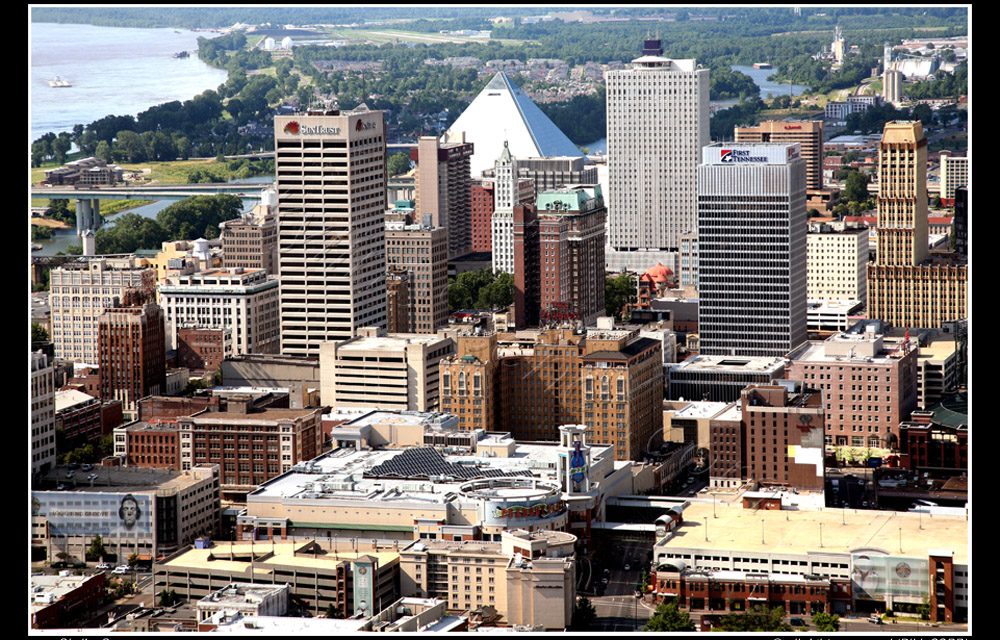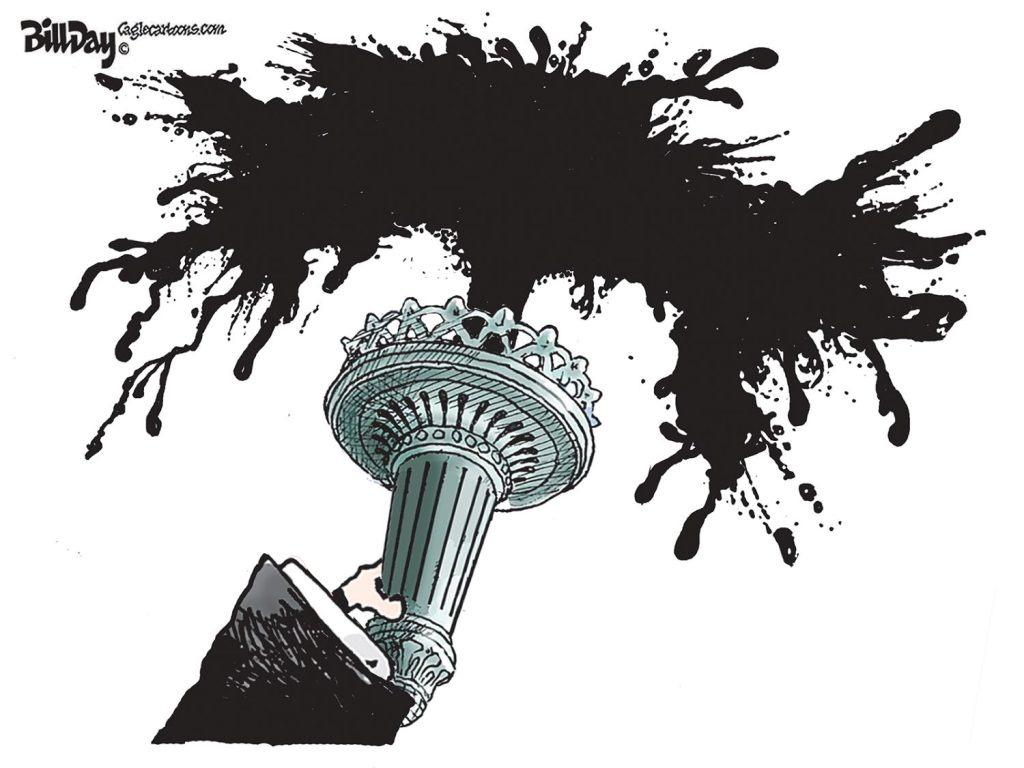It’s hard to remember a time in the modern history of Memphis when so many people are on the verge of giving up on their city.
There’s the lack of confidence in the city’s ability to solve the crime crisis, there’s the growing question about whether the new city administration and City Council are up to the task for the challenges in front of them, and there’s growing skepticism that some of Memphis’s marquee projects may never become reality.
There has always been a vein of negativism and self-doubt that has always been part of Memphis’s character. Gloom and doom have always seemed to be just around the corner. There was the attitude that greatness was just a big project away.
And yet, this feels different. And the fact that the current the current malaise and sense of crisis comes from people who have been inveterate cheerleaders makes it all the more disturbing.
It’s Not Just City Hall
Way too often, when there is a challenge or concern, Memphians turn to City Hall for answers rather than to the proud people in the city that has given birth to bursts of creativity and resilience with global impacts – from Memphis music that became the music of the world and to a company that invented modern global commerce, FedEx.
That tradition of ingenuity is what makes it so strange that faced with problems, the public tends to turn to City Hall as if all wisdom and solutions reside there. It’s not fair to the public officials and employees who work there but it’s also not fair when it allows Memphians to sidestep their own personal responsibilities to stand up to lead change.
City and county governments have regularly acted on the notion that the magic answer can be found in the building of projects rather than the building of a plan of action based on shared goals and ambitions.
City and county governments built The Pyramid as a confidence-building icon on the banks of the river. City and county governments built FedExForum so Memphis could have the self-esteem boost of becoming a pro sports city. City and county governments made sure AutoZone Park was built. City government built the youth sports center at Liberty Park to get Memphis its share of the amateur sports industry.
There have been encouraging signs but they often happen with no immediacy. It arguably began with the development of Shelby Farms Park on county-owned land and which received awards for its design. More recently, there was the development of Tom Lee Park on city-owned land that has garnered national and international acclaim. The new Memphis Museum of Art is under construction on a site that was long wasted on a fire station and parking garage.
Reasons for Optimism
And yet, major private sector projects have languished and punctured Memphians’ optimism — the Loew’s Hotel project, the Grand Hyatt, The Walk, Pinch District redevelopment, and others. And the city holds its breath to see if the long abandoned 100 N. Main Building and the Sterick Building are for real.
Both of these prominent buildings on the Memphis skyline have long been like tombstones sending the message that Memphis was dying. Based on the quality and prominent developers involved in each of them, there are reasons to be optimistic. There are hopeful signs that The Walk and the Grand Hyatt will be resurrected.
All of these buildings require significant public financial support, but taken together, they can produce the kind of impact and ramifications that can be compelling for downtown and for all of Memphis. They have the kind of importance that means whatever the public sector can do to help them realize their development, it should do it.
That would leave the Raymond James building as the skyline anchor that needs serious attention. If the present site of the MLGW headquarters at Main and Beale could be put to more profitable use than it is today, the utility should move down the street and set up shop in the Raymond James building.
Hopefully, the tone deaf plans to move the MLGW headquarters outside of Memphis are dead and buried, but there’s little argument that the existing building has always been a jarring addition to downtown with its suburban sensibilities.
Long-Term Matters
Meanwhile, Elon Musk’s supercomputer announcement hasn’t really produced a burst of civic confidence despite the Greater Memphis Chamber and the Daily Memphian breathlessly touting it and ignoring cautionary tales from other cities about the way the billionaire ignores local regulations, threatens and berates local officials, and pretty well does whatever he damn well pleases.
It remains to be seen what unfolds in the Musk saga but because Memphis is gambling big time with its electricity and water resources, here’s hoping he will be a good corporate citizen in Memphis. At the least, here’s hoping that the xAI announcement will encourage other companies to take a new look at Memphis. That may actually end up being the primary benefit of the supercomputer since it won’t create a significant number of new jobs or the kinds of jobs that would mean the most for us.
In other words, it seems a long shot that the Musk project is one that will boost Memphis self-confidence and create the excitement needed right now.
Without more and better-paying jobs, it’s going to be difficult for Memphis to reduce the 42% of citizens living in poverty or are part of the working poor. That’s why More for Memphis and other grassroots action plans must have support to change the tough structural challenges in Memphis – poverty, crime, and educational attainment – at their sources.
All of us should be praying for these programs’ success, but the positive results from them will be long-term.
It’s A Revived Downtown, Stupid
That said, it leaves the question: What can lift the fog of frustration that grips so much of Memphis?
For me, it’s an easy call: It’s all about creating a vibrant, animated, uplifting downtown Memphis.
In Memphis, more than any city I know, positive civic attitude has much to do with what takes place on the basketball court in FedExForum – with the Memphis Grizzlies primarily and the University of Memphis Tigers secondarily. Memphis has a long history of tying its positive outlook to successes of its sports teams, and the promise of the Grizzlies this year has already received “way too early” predictions that it will be one of the best NBA teams and one of the most enjoyable with young, exciting players.
In only six years, the riverfront has been remade, culminating with the opening of Tom Lee Park, which has already attracted 800,000 visitors in its first year. When the riverfront is joined by the Memphis Museum of Art, Memphis will have achieved its goal of turning its face back toward the river that was the reason for the city in the first place.
Not too far away, the National Civil Rights Museum is undergoing another expansion and renovation that brings the cost of its two renovations since its 1991 opening to more than $50 million. The cost of the original building was $8.8 million.
Alignment and Linkage
These are pivotal projects for Memphis, but it is impossible to overstate the impact that would result from the resuscitated 100 N. Main Building and Sterick Building and a new plan to build The Walk and Grand Hyatt.
They give Memphis the opportunity to stitch together a downtown with more energy and activity than it’s had in 30 years. If that could be backed up by a management plan by a management company for Beale Street and a more effective clean and green plan for downtown, downtown would be transformed – and so would the attitude of so many Memphians looking for a reason to be hopeful for the future and excited about what’s taking place.
Beale Street comes under the control of the Downtown Memphis Commission but in recent years, it has left much to be desired not only on Beale Street but on Main Street. In a word, downtown today has a distinct feeling of being unloved.
The immediate future offers Memphis an exciting opportunity to link projects that can give new downtown new life and Memphis new optimism.
Most of all, it’s not about projects. It’s about people, Memphians who won’t lose patience as the pieces are put together with the potential for the kind of downtown we have not seen in decades and a renewed optimism that is desperately needed now.
**
Join me at the Smart City Memphis Facebook page and on Instagram where these blog posts are published along with occasional articles, reports, and commentaries that are relevant to Memphis.





There are several points to be made here. First, I think Memphis suffers from the macro-bad image problem, micro-good image problem. I live in Cooper Young (not downtown)). Life is easy here — entertainment is nearby, stores are nearby, the neighborhood is walkable, and crime seems manageable. So, it is hard to be unhappy in this little neighborhood. Still, we all complain about the City as a whole — ignoring our micro happiness. Second, Memphis has a long-term habit of giving away the store to corporations that find us interesting — we give out PILOTs with robust enthusiasm. I have never understood the desire to throw acclaim and money at people who already have it, but I may not get the importance of making the wealthy happy. Third, the shame of Memphis is its poverty — the legacy of racism lingers on and the tradition of being a service (low Pay) economy reinforces that background. But it is a problem that requires a national solution (a real minimum wage law, universal health insurance, equitable housing policies). In fact, the current election cycle is exactly about these issues at the national level.
David: As usual, your comments are right on target.